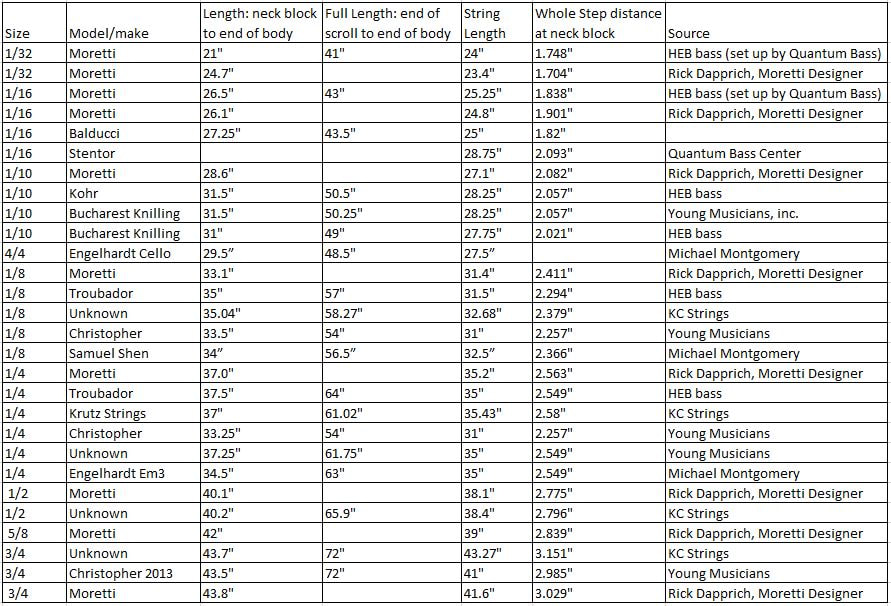Sizing your StudentSizing: is bigger always better? How do you tell if a student is matched with the appropriate bass for his or her size?
|
|
|
Fractional bass sizes: exploring the range of possibilities
I noticed some discrepancies in sizes among makers, and wanted to collect this data somewhere useful. It is incomplete, but I hope to share more over time. I also plan to eventually start collecting data about bows for these sizes, but I'm not quite prepared to go there yet. Below is the data I have compiled from a few sources willing to share information no these sizes. Many of them are basses that are owned by my school district, hence the source "HEB bass". If you are interested in sizing according to the base knuckle theory, or would like to know the process, Mitch Moehring suggested I use the Stew Mac guitar fret calculator to find the below measurement titled "whole step distance at neck block" (Francois 3rd position, Simandl 4th position; electric bass frets 7 to 9). This is important to teachers of beginners especially because that's where we start in the hopes of building a beautiful left hand setup with a nice, relaxed hand frame. If a student has to stretch his or her fingers at all in this position, imagine what will happen once you explore first position, where the notes are even farther apart!
(Updated 3/22/18)
Things to consider: when I measured my own hand, I would size myself at approximately a 39" string length. This is interesting to me because I always struggled with tension in my playing until I started playing on my French bass restored by Arnold Schnitzer. Although the string length is longer than this, I felt an immediate change in my playing due to the vastly smaller shoulders than the Prescott bass I was playing, in addition to a lower tension string. In conclusion: be passionate and protective when it comes to the size and setup of the bass you play, as well as your students. If it's not available, pester your local bass shops or write a grant to get the appropriate instruments. The more we fight for the instruments to fit our students, the more our students will achieve.
Please send me measurements if you have an instrument that will add to the database. The more information we share about sizing, the better!
Please send me measurements if you have an instrument that will add to the database. The more information we share about sizing, the better!

